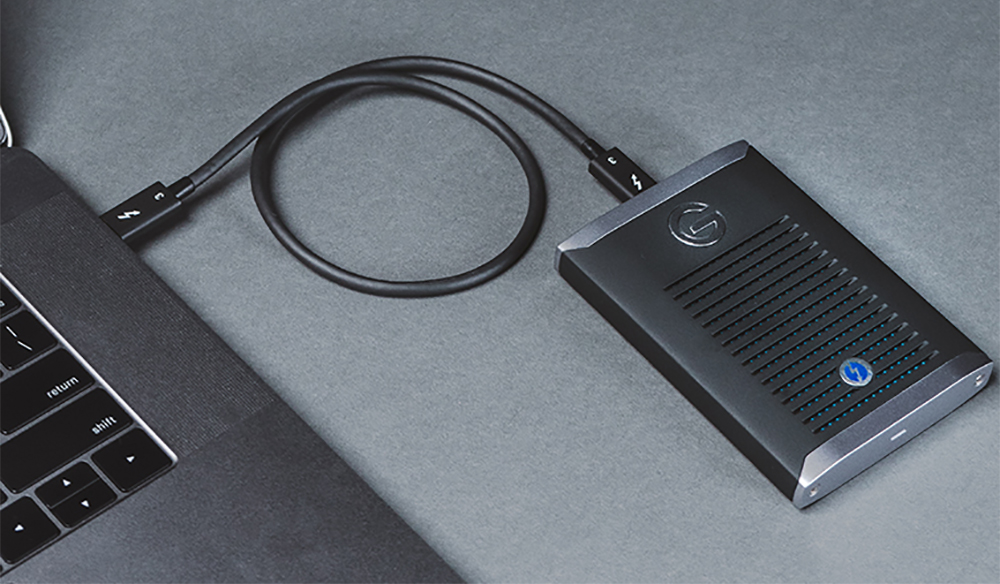

With any external hard drive interface, keep in mind that you will only achieve its maximum data transfer rate if your computer-and the external hard drive-support it. When searching for a drive, you will want to make sure you comfortably exceed these data rates to ensure uninterrupted performance. Compressed files straight from the camera or proxy workflows can alleviate a lot of this strain and are arguably becoming more important in editing, but you should still be able to play back your files smoothly. Working with DCI 4Kp24 ProRes HQ files requires at least 94 MB/s. You need to prepare for 4K and greater resolutions. Are you using FireWire, USB 3.0 or USB 3.1 Type-A or Type-C, Thunderbolt™, Thunderbolt™ 2, or possibly Thunderbolt™ 3? Do you intend to use eSATA or set up a RAID array because a single drive can't handle your output, so you need multiple drives? Interface Speeds: USB, Thunderbolt™, and Beyond Next, you need to consider your interface. These days, the bare minimum spin rate is 7200 rpm, though even faster drives, such as solid-state, are available for a premium.

To prevent getting bogged down by a sluggish external hard drive, you need fast drives. No one creates a greater need for media storage than a videographer, especially those working in 4K. To break it down, we'll discuss the writing of data to an external hard drive while editing video, for use in photo editing and running audio projects. Each medium is different, as is every user.

The first thing to determine must be how much overall storage space you need and, then, what data-transfer speed your projects will require. With the ever-increasing data-transfer demands brought on by more megapixels, higher audio bit rates, and higher-resolution video-keeping up with all of that data can be a burden. Reading and writing files directly to or from an external drive can incur some hefty performance demands, so it's best to determine your needs before you buy a drive. There have been complaints documented over at about severe throttling by the Samsung X5 tbolt3 drive under heavy loads.Īgain, much depends on what you'll be using the drive for.įor "general external storage", I'd be fine with a 2.5" drive or USB3.1 gen2.If you work with libraries of large image files, or in audio or video production, you need to be selective about your external hard drive. The fastest speeds are from thunderbolt3 enclosures with nvme blade SSDs.īut they are expensive and again - due to the higher speeds, they can get hotter than the same drives used in USB3.1 gen2 enclosures. I sense that this is part of the nvme control technology that will throttle back a drive under heavy write loads and high heat, with the objective of reducing write errors (due to heat). These will give you reads in the 960MBps range, but I've noticed that it will "throttle back" under heavy loads and high heat. I used an Orico enclosure and a Crucial nvme blade. I have one of these I put together myself. This will become noticeable under "heavy write" situtations. The next "step up" would be to get a USB3.1 gen2 enclosure and then put an nvme blade drive into it.īut be aware that nvme drives "run hotter" than do 2.5" SATA drives. and you should see read speeds in the 420-430MBps range over USB3a.


 0 kommentar(er)
0 kommentar(er)
